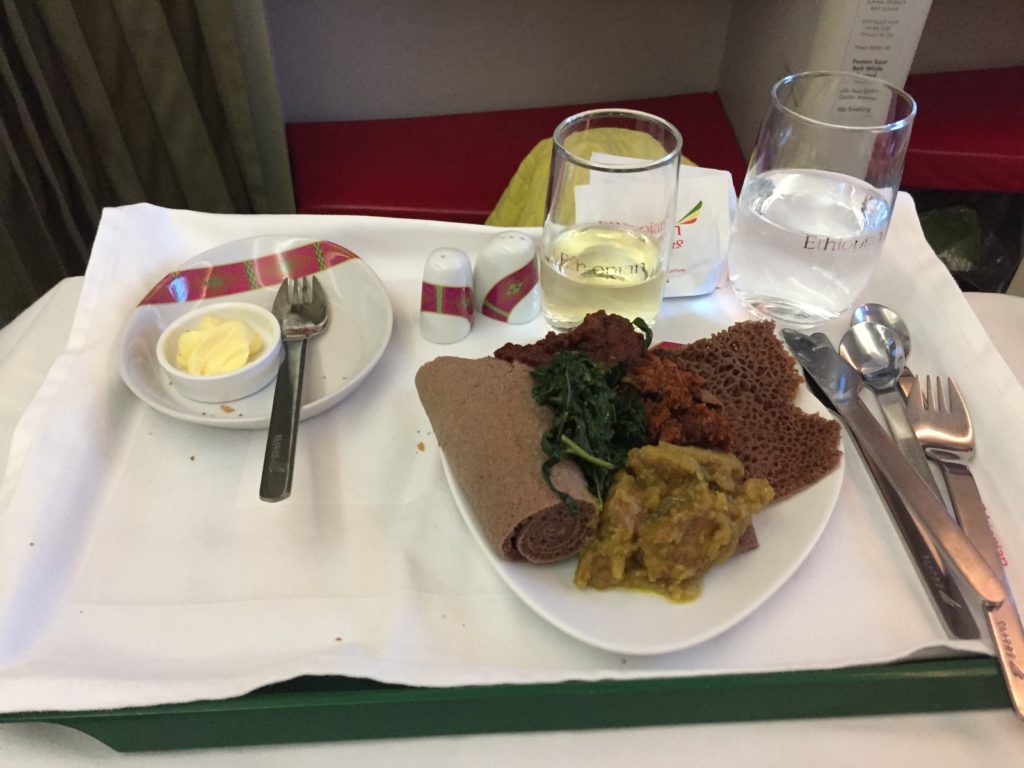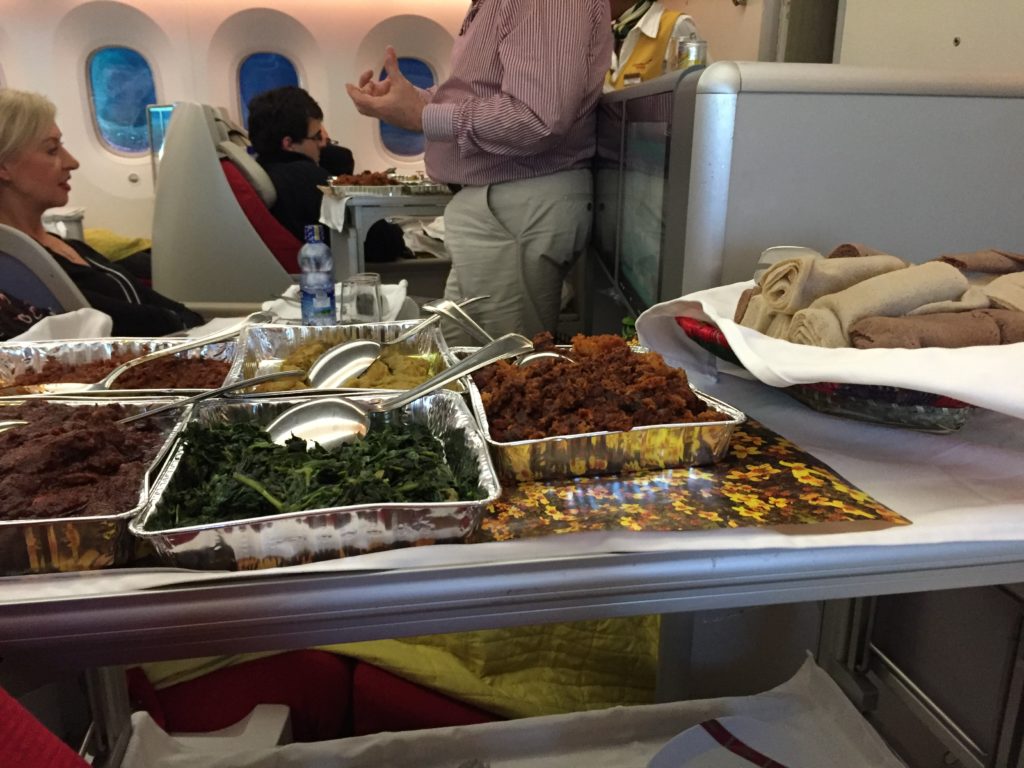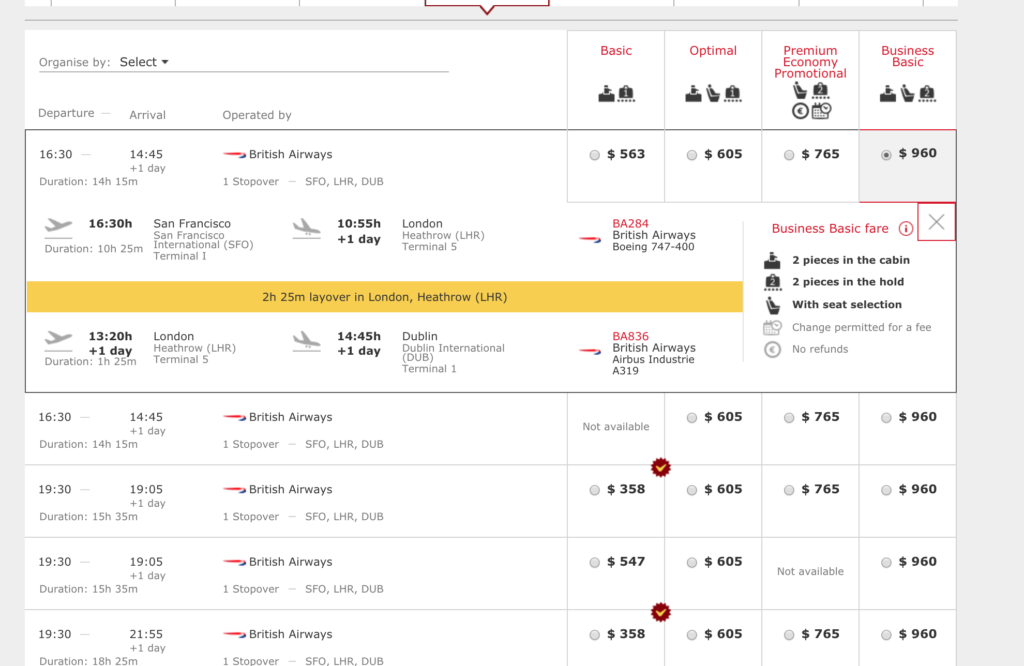Last year was something of a turning point for me in terms of my travel habits. Whereas two years ago I let my travel be largely dictated by mistake fares and other sales, this past year I had a very explicit list of places I wanted to go, and I used my miles and ‘hacking’ in order to reduce the cost as much as possible (and/or fly in premium cabins).
It’s pretty evident why this would be the case for someone. Once you have built up miles and points balances through credit card signups and manufactured spending, means are less of a bottleneck. Traditional award charts offer fixed miles prices for flights irrespective of the cash price, which means that (assuming you can find availability), a $500 flight to a random U.S. city near a national park costs you the same as a $200 ticket between two major domestic hubs. For premium cabins, the value proposition can be even greater, because the miles prices are typically marked up 50-150% relative to coach, whereas cash prices can differ by up to a factor of ten.
Therefore, last year saw me travel to a bunch of places I had been dying to visit — Australia and New Zealand with Esther and Michael, Milan and the south of France with my sister, and Cambodia and Hong Kong with my friend Jacob.
Of all my “planned” trips last year, however, the ones that were the least expected and also the most difficult to arrange were my visits to Dublin. My partner moved to Ireland for a year, and since my job offers me the flexibility to work from nearly anywhere (incidentally, we have an office in Dublin), we decided that it would be easier for me to trek there than vice-versa. All told, I will have made five trips to visit, and the process of booking those flights allowed me to explore a lot of different facets of travel hacking and flight booking that hopefully will open up other options down the line.
Since writing things down helps me remember them, I decided to do a write-up of my experience booking each of my five trips:
Table of Contents
Trip 1: Easy mode
What I spent:
- $430 for a round-trip SFO-JFK-DUB, with a 9 hour stop in JFK on the outbound.
What I earned:
- 5,765 EQM and 11,530 RDM with Alaska.
Was it worth it?
Nowadays, given enough flexibility, you can go anywhere in the world for about $500. This was a perfect example of just how inexpensive cash fares have gotten, and it was even better because it fit my target dates perfectly. The nine hour layover was a huge (intentional) bonus, since it meant that I could spend some time with my parents before continuing on my way.
Trip 2: Sometimes, you just want to get there
What I spent:
- 30,000 UA + $5.60 on a last-minute, one-way coach ticket, plus $150 to cancel an existing ticket. 55,000 AC + $90 on a return in business class.
What I earned:
A valuable life lesson.Nada. This was an award in both directions.
Was it worth it?
This was the first time in my life I weighed cost so explicitly against time and opted for time over money. I’ve historically been willing to take a connection to save $50, but in this case, the tradeoff was even greater: my existing (business class itinerary) would have gotten me in two days later than the coach award I ended up flying. While it would have been great to fly business class (particularly since I somehow had snagged a seat on American Airlines’s LAX-LHR business class), I really wanted to get to Dublin. When SFO-LAX-DUB availability popped up on Ethiopian Airlines (coolest fifth freedom ever), therefore, it was a pretty easy choice. Incidentally, this is a huge advantage of award flights over paid flights — even though the fees can be high, your booking is almost always cancellable up to the day of the flight.

Caviar and champagne are great and all, but this was probably the coolest meal experience I’ve had on a plane.
Trip 3: The perfect redemption
What I spent:
- 20,000 Flexperks for a $397 sale fare on Delta, SFO-JFK-DUB.
What I earned:
- 5,765 EQM and 11,530 RDM with Alaska.
What I learned?
Not much, other than that sometimes you get really really lucky. For those unfamiliar with Flexperks (you can learn a ton more here), they have a tiered award chart based on the cash price of a ticket. Therefore, the best redemptions come when your cash price is just below the upper bound of the tier, which, in my case, was $400. I wasn’t entirely sure if the dates would work when I saw the fare pop up, but the redemption was too good to pass up, so I decided I’d find a way to make them work. Thankfully my partner is understanding of the constraints I’m ‘working’ under and expects that sometimes I’ll just book flights and sort out the details later.
Trips 4 and 5: Hard mode
What I spend:
- 41,500 IB Avios plus $110 for a one-way business class ticket ORD-MAD-DUB, plus 5500 VX + $5.60 for the positioning to ORD.
- 1,172.80 Euros for a “round-trip” from DUB to SFO on AA, with the “outbound” DUB-PHL-SFO in coach and the “return” SFO-ORD-DUB in business class.
- 30,000 UA plus $40 for a one-way coach ticket DUB-LAX on my new favorite airline, Ethiopian, plus 5,500 DL plus $5.60 for the connection to SFO.
What I earned:
- 2,897 EQM and 5,794 RDM on Alaska for the DUB-PHL-SFO segment
- 8,280 EQM and 13,800 RDM on Alaska for the SFO-ORD-DUB segment
- 7,000 MR points on ~$1,400 in spending from booking with my American Express Platinum card.
What I learned:
I started out arranging these trips by trying to salvage the AA award I had moved from Trip 2 to no avail (OneWorld transatlantic availability is absolute garbage unless you’re willing to stomach BA fuel surcharges or are booking 10+ months out). When that failed, I was still pretty insistent on flying my outbound legs in business class, since I suffered some pretty crippling jet lag in each of my previous trips. For whatever reason, Asia and Oceania pose very little problem to me with the time differences, but the +7/+8/+9 hours when going to Europe render me dysfunctional.
I found some perfect award availability on UA metal SFO-CDG-DUB on their newer business class (this is what it looks like), and so I booked that, but when my partner woke up we decided that the dates might not work, so I cancelled it for no fee (this is why 24 hour cancellation is great). A few days later and after moving our schedules around, we were able to make the original dates work, but the availability had disappeared! Searching with other airlines/alliances pulled up no availability either, which was frustrating.
However, my friend pointed out that often Iberia has award availability reserved for its own members, and indeed, I was able to pull up an ORD-MAD leg in business class for a mere 34,000 miles plus ~$100 in taxes!! After throwing on a MAD-DUB segment in coach, my total came to 41,500 miles plus $110, which was perfect. A few clicks later, after transferring Chase UR to BA Avios and then BA Avios to IB Avios (note your addresses on your accounts must match otherwise you’ll get an error), I had my flight booked. I finished that leg off with a VX award booking from SFO-ORD, and I was good to go.
For the return, I was looking to fly in coach, and I also wanted to take advantage of significantly cheaper pricing for round-trips from Europe to the US versus US to Europe. This meant that if I wanted a leg in business class for my second outbound (for which there was no award availability because of the summer high season), I’d need to pay business class in both directions.
Again, BA and IB came to the rescue. They make it easy to book mixed cabin awards on their sites, through which I discovered that the expensive part of a DUB-SFO round trip in business class was the DUB-SFO leg and not the SFO-DUB leg. Here’s an example of what their paid fare search engine looks like:
My total for both segments, as mentioned, came to about $1260. Compared to the next cheapest economy option on KLM, I paid about $800 more, which can roughly be allocated between the business class ‘upgrade’ and the better mileage earning with Alaska. This is more than I’d pay under normal circumstances (it’s certainly more expensive than the 30,000-40,000 point difference between a one-way coach award and a one-way business award, which would only cost me about $200 to manufacture), but given that there was no award space, I was okay with the up charge. <Insert rants from a few of my friends about how I should have resorted to other options, including using a SWU or using Avios to upgrade a Premium Economy fare>. This is the first time I’ve paid cash for a premium cabin, so it was interesting to run the costs and determine what my willingness to pay would have been ($2,000 for a round trip, so the $960 segment comes in right under that number). That said, there are other, cheaper ways to fly business class net of earned award miles, so it’s not something I’d like to make a habit of.
In Sum
Net of all mileage earning (and for simplicity, I’ll say that all miles are created equal), I spent $2,100 and 137,500 (187,500 – 50,000) for my five trips, with three segments in business class. If we assume I could have just bought five round trips in coach for $420 each, then my miles (27,500 per trip) got me better flexibility (like moving up my flight by two days) and comfort (the business class legs) versus only having paid with cash. I think I can do better, but I’ll take it 😉
Happy hacking!


